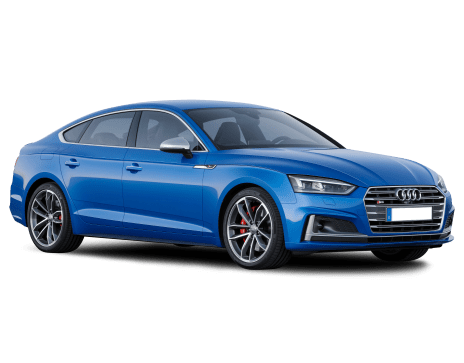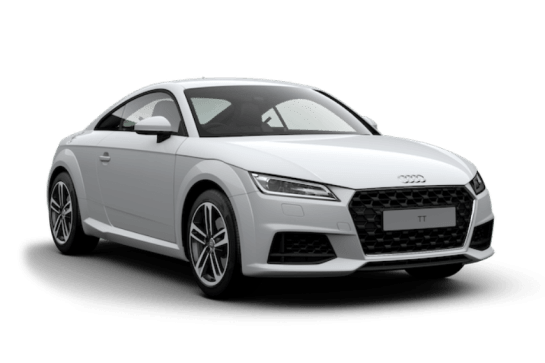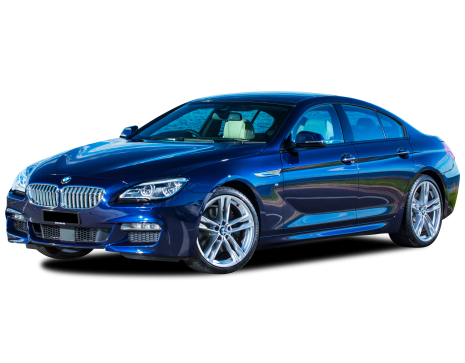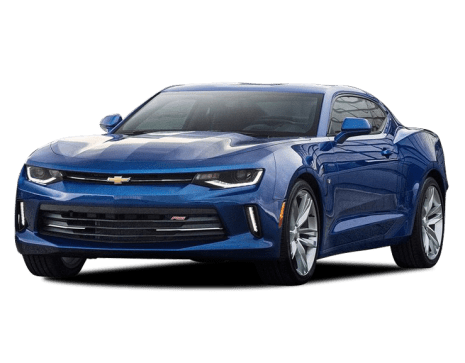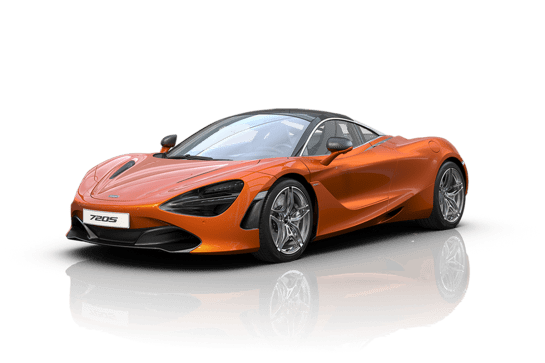
Porsche 911 VS Mercedes-Benz AMG GT
Porsche 911
Likes
- It can really go off-road
- Still handles brilliantly on sealed roads
- Has everyday usability
Dislikes
- Mid-range 911 powertrain
- High asking price, even for a 911
- Built in strictly limited numbers
Mercedes-Benz AMG GT
Likes
- Lightning performance meets thunderous sound
- Supernaturally agile yet safe dynamics
- Everyday practicality
Dislikes
- Firm ride
- Road/tyre noise intrusion
- No spare wheel
Summary
Porsche 911
Marvel Studios has become the master of extracting as much value from a concept as any corporation in the world - except one.
Each year we’re bombarded with at least a couple of superhero movies and even more television shows, so much so now that the term ‘superhero fatigue’ has entered our social consciousness. We no longer care if Thor or Spider-Man save the day because we’ve seen so many world-ending disasters being stopped at the last minute we can no longer feel excited.
Porsche, though, is able to create one spin-off after the other and still have true motoring enthusiasts getting sweaty palms and elevated heart rates. The current 992-generation 911 range included a frankly mind-boggling 23 variants, from standard Carrera all the way up to the race-car-in-disguise GT3 RS and the full-speed, full-lux Turbo S.
Read more about
- Porsche's Mission X will be the brand's fastest and most expensive road car yet - but will the Lotus Evija, Aston Martin Valkyrie rival come to Australia?
- The end is nigh for petrol-powered 2024 Porsche Macan, Cayman and Boxster: Porsche Australia sets date to close order books for three models
- 2025 Porsche Taycan Turbo GT revealed: Most powerful series-production Porsche yet conquers Laguna Seca and the Nurburgring before coming to Australia mid-year as new electric car flagship
And yet, somehow the German maker found room for a 24th variant. How? By going off the beaten track. Literally.
The Porsche 911 Dakar is unlike anything the brand has done before, taking the iconic sports car and giving it an off-road twist.
So, what is it exactly? Well, for those unfamiliar, the Dakar Rally is an off-road race that typically lasts two weeks and sees competitors take on the roughest and toughest conditions the desert can throw at them. It’s a gruelling and sometimes fatal challenge, but it’s the toughest test of human and machine.
It’s also typically contested by large, SUV-based vehicles. In recent years it was Toyota HiLuxes and Volkswagen Touaregs doing the winning, while in the early days it was Range Rover.
Porsche won the Dakar Rally in 1984, using a specially modified version of its 911 to beat its conventional off-roader competition.
To celebrate that victory, and add one more variant to the 911 range, Porsche created this jacked-up, beefed-up version of its sports car.
But is it all looks and no substance? We went bush to find out…
| Safety rating | — |
|---|---|
| Engine Type | 3.0L |
| Fuel Type | — |
| Fuel Efficiency | 10.5L/100km |
| Seating | 2 seats |
Mercedes-Benz AMG GT
Once upon a time, people would dream about owning a Mercedes-Benz 450SLC – the C107 sports/luxury coupe flagship of the 1970s.
Sexy, stylish, secure and incredibly solid, it embodied the brand’s ‘Engineered Like No Other Car' mantra of the era.
Today’s all-new, second-generation, C192 AMG GT Coupe is something of an indirect descendant of this sort of thinking, changing tack from its supercar-esque 2014 C190 predecessor, with more space, more seats, more sensibility and, conversely, even more steak and sizzle from its glorious V8.
Read more about
- Special performance car revealed: 2025 Mercedes-Benz A45 S Limited Edition arrives to battle Audi RS3 and BMW 240i
- 'Automotive icon' gains mild-hybrid technology and improved off-road capability to compete with Toyota LandCruiser, Range Rover Sport and Audi RSQ8: 2025 Mercedes-Benz AMG G 63 pricing revealed
- Mercedes-AMG GLC63 2025 review: S E Performance - Australian first drive
A modern-day SLC? The Porsche 911, Aston Martin DB12, Maserati GranTurismo and Bentley Continental GT’s worst nightmare? Or something else entirely?
These questions and more are answered below.
| Safety rating | — |
|---|---|
| Engine Type | 4.0L turbo |
| Fuel Type | — |
| Fuel Efficiency | 14.6L/100km |
| Seating | 4 seats |
Verdict
Porsche 9118.1/10
Personally (and I’m expecting some hate from the fans in the comments), I hope Marvel slows down on the superhero movies and shows, but Porsche can keep doing its thing if cars like the 911 Dakar are the result.
It’s certainly a very niche offering, and one that will almost certainly go to collectors in this instance. But even that didn’t stop Porsche from investing in proper off-road upgrades to ensure the 911 Dakar is just as capable in its element as the 911 GT3 is in its and every other member of the range.
There’s been no official word from Porsche, but my hope is the 911 Dakar follows the same scenario we saw the the previous-generation 911 R. That was another strictly limited special edition, basically a GT3 without the big wing, and it was so popular it spawned the 911 GT3 with Touring Package for this latest generation.
It may be unusual and unlikely, but the 911 Dakar is also unquestionably a great addition to the already extensive 911 range.
Mercedes-Benz AMG GT8.1/10
The GT63 4Matic+ is a breathtaking example of everything that Mercedes-Benz and AMG are.
Ferociously fast, incredibly agile and superbly sophisticated, it should be on anybody’s shortlist, if that also includes a Porsche, Aston Martin, Maserati or even a Lamborghini. And it’s definitely much more than yesterday’s SLC ever was – for similar money in today’s terms, as it turns out.
But, around Tasmania’s glorious roads at least, the Mercedes-AMG lacks the ride comfort and road noise isolation to be a fully-rounded-out GT, and that’s a disappointment for a brand with such formidable history in making such cars.
Design
Porsche 911
As you can see in these images, our test car was fitted with the optional 'Rallye Design Package'. It adds another $54,730 to the cost but brings with it this head-turning paint scheme inspired by the racing livery from the 1984 winner. It’s actually a two-tone paint job with a wrap, the first time Porsche has produced such a finish on any of its production cars.
The ‘Roughroads’ is a substitute for the original cigarette brand that sponsored the car, while the white and blue scheme, with red and gold highlights is almost identical to the ‘84 car. Owners could pick any racing number between one and 999, our test car had #176 because that’s the number carried by the winning car.
The Rallye Design Package isn’t just a fresh look, too, it also adds the white wheels, a half roll cage, six-point racing-style harnesses and a fire extinguisher, so you can enter motorsport competitions and really push your Dakar to its limits.
Mercedes-Benz AMG GT8/10
This is still clearly a Mercedes AMG GT coupe, like the 2014 C190 original, but a ground-up redesign sees it subtly yet significantly altered.
Some 270kg heavier than before, the larger-in-every-dimension body combines aluminium, steel, magnesium and fibre composite materials for improved rigidity and a lower centre of gravity. Length (4729mm) and wheelbase (2700mm) have been stretched by 177mm and 70mm respectively. Width (1984mm) and height (1352mm) are also up.
The nose treatment is similar to before, especially with the bulgy bonnet and signature vertical slatted grille fitted. These, combined with the LED digital headlight shape effect, is reminiscent of, but far-better executed than, the goofy-looking MG5’s face.
Underneath, it's an all-new platform shared with the SL, with the rear transaxle of the old car replaced by a permanent AWD system, leading from 46:54 front/rear weight distribution to 50:50 as a result.
That aggressive, exaggerated cab-backward/ultra-long bonnet silhouette that visually connected it with the SLS gives way to more-conventional and practical coupe proportions that is striking if not especially original, since they do look quite 911-esque. Along with the longer wheelbase and wider tracks, the result allows for two small rear seats to be fitted, while liftback cargo access remains.
Similarly, in the name of way-more usable interior packaging, Mercedes-AMG says it pushed the driving position nearly 180mm forward compared to the previous GT. Let’s see what that all looks like inside.
Practicality
Porsche 911
The interior is probably the most ‘normal’ 911 element of the Dakar. Yes, it’s strictly a two-seater (even without the optional roll cage), but it doesn’t feel much different to a GT3, especially as the brand’s 'Race-Tex' synthetic suede is the standard trim material. The only exception is the unique ‘911 Dakar’ badge on the passenger side of the dashboard, which tells you exactly which one of the 2500 examples yours is.
While Race-Tex is the primary trim, there’s plenty of leather elements and contrasting stitching to give a premium look and feel. The standard seats in the Dakar are the lightweight full bucket sports seats, made from carbon-fibre reinforced plastic and also trimmed in Race-Tex. This adds to that sporty, GT3-like feeling. They’re comfortable when you’re in them, but as they’re quite deep they make getting in and out a bit trickier than the standard Porsche chairs.
The rest of the technology is standard Porsche. The multimedia system is as simple and intuitive as ever, one of the better examples on the market today, which is something you typically think of with Porsche but it shows the company’s attention to all the details.
The Dakar comes equipped with a Bose surround sound system and full smartphone integration, with wireless Apple CarPlay and Android Auto.
However, it’s worth noting if you add the Rallye Design Package and get the roll cage it will cut down on the amount of usable storage space. Without it, you can use the now-carpeted space where the rear seats would go for extra storage, but with the cage you can only squeeze a few soft items in. The rest has to go under the bonnet in the relatively deep but narrow front storage space, which measures 132 litres.
So, if you do want to take an extended road trip in your 911 Dakar, springing for the roof storage system would be a helpful idea.
Mercedes-Benz AMG GT9/10
The first impression inside is that of space, despite the falling roofline and coupe-like upsweep of the side windows and you look back. While, again, similar to a 911s, a kink at the door gives the GT a unique character.
Even larger people will appreciate the generous amounts of room up front, with space to stretch, sat in sumptuously comfy bucket seats. Note that the standard ones are better than the racier but firmer Sports versions.
The driving position is perfect, ahead of a dashboard that is very typical modern Mercedes in appearance and layout.
To that end, the tablet-style integrated touchscreen (11.9 inches) is clear, fast and intuitive once time is taken to learn it. And points are also won for the multi-configurable electronic instrumentation, that allows for a variety of screens, including track, classic and minimalist views.
The trademark turbine air vents, the quite beautiful material and trim finishes and just the general solid feel are further typical contemporary Mercedes cabin treatments, as are the excellent ventilation and ample storage options.
And while rear vision isn't great, that's what cameras are for. It's all pretty much on brand.
It is a shame, given how elevated the Mercedes-AMG engineering is underneath, that the GT’s interior look and ambience is so similar to those of a (albeit higher-spec) C-Class or GLE. It's simply not as special as some of the company’s previous sports cars.
More annoyingly, the ride is too firm and bumpy for a GT, and this has the unhappy effect of provoking random rattly trim sounds within the cabin. It’s a bit like scrunched-up cellophane. In a $420K (as tested) Merc, that’s very disappointing, especially as it can be heard over the copious amount of road and tyre noise droning through, particularly on coarser bitumen surfaces.
Further back, the rear seat is strictly two-plus-two, and nobody over 150cm tall is recommended to travel there by Mercedes itself. That sloping roofline is the culprit. That said, brief trips with a bowed head are possible, as the fixed cushions and split-folding backrests are actually surprisingly comfy. But only for short journeys. Kids should love it though, and the second row does open up the GT’s usefulness enormously.
As does a near-doubling of the AMG’s cargo capacity, jumping 146 litres to 321L with backrests erect, to a whopping 675L (+325L) in two-seater mode. The flat floor is accessed via a large electrically-operated liftback door, offering quite a large aperture for easy loading/unloading.
Having no spare wheel helps here, with a tyre inflation kit included in lieu of that.
Meanwhile, at the front, under the bonnet, things have definitely changed for the better as well.
Price and features
Porsche 911
At first glance you might just think the 911 Dakar is just a sticker pack and a new set of wheels and tyres, but you’d be very wrong.
Yes, there is a sticker pack (more on that later) but Porsche has made some pretty significant engineering changes for the Dakar. Enough that the company claims it now has similar ground clearance and approach angles of a “conventional SUV.”
These changes include up to 50mm more ground clearance than a standard 911 Carrera, plus an extra 30mm of lift when needed from the hydraulic suspension. This higher height isn’t speed restricted, so you can stay lifted and put your foot down, which is perfect for high-speed off-road driving.
There are unique five spoke, forged alloy wheels (19-inch front, 20-inch rear) fitted with specifically designed Pirelli Scorpion All Terrain Plus tyres. To fit this new package there are wider wheel arches with stainless steel for extra protection.
Other unique additions include red aluminium towing points front and rear, a new front bumper with underbody protection and a new, fixed rear spoiler. The bonnet is also very similar to the one found on the 911 GT3, made from carbon-fibre reinforced plastic to save weight.
Porsche has added rear-wheel steering as standard on the Dakar, as is its 'Dynamic Chassis Control' anti-roll stabilisation system, with both intended to help its off-road prowess.
There are some notable - and unusual - optional extras for this version of the 911. These include roof racks able to incorporate a lightbar and/or an extra storage rack that can take on an additional 42kg of luggage. Shovels, traction boards, spare tyres and fuel or whatever else you need for an outback adventure. You can even add an optional tent if you want to go camping in your Porsche 911.
Despite an official asking price of $491,400 (plus on-road costs) it’s hard not to give this 911 a perfect score for price because this is one of the very few cars that will almost certainly appreciate in value, rather than shed it. Porsche is building just 2500 examples of the 911 Dakar globally, so these will become a collector’s item and should be priced accordingly.
Mercedes-Benz AMG GT8/10
Starting from $370,400 (all prices are before on-road costs), the Mercedes-AMG GT63 4Matic+ is priced and positioned as something of an eagle amongst some pretty delectable doves, given its combination of four seats, 430kW of power, 800Nm of torque and four-wheel drive.
No rival equivalents can match the Mercedes on paper. The 398kW/610Nm 911 Carrera 4 GTS T-Hybrid offers less power but starts from $400,000-plus. The 410kW/650Nm GranTurismo Trofeo begins at $450K, the 500kW/800Nm DB12 from $455K and the 404kW/470Nm Continental GT from $460K.
Only the 460kW/750Nm BMW M8 Competition comes closest to the Mercedes-AMG, from $380K.
Side note, today’s GT is only slightly more expensive than what the 450SLC was nearly half a century ago when adjusted for inflation.
And, just like with that classic old Benz, it shares much with the brand’s legendary SL convertible stablemate – including, in this case, standard all-wheel drive and active rear-axle steering… aka 4WS to select third and fourth-generation Honda Prelude owners out there.
What else does $400K-plus buy you? As you’d expect, the GT63 4Matic+ comes choc-full of standard equipment, much of it typical of the luxury coupe breed, with leather-covered and electrically operated everything.
How about a front-axle lift system with GPS-enabled memory that automatically raises the GT’s nose to help clear bumps and then remembers to do so next time?
There are climate-controlled AMG sports seats with inflatable bolstering and massaging functionality, a fixed glass roof, a head-up display, augmented-reality satellite navigation, 360-degree surround views, performance telemetry data as part of an extensive multimedia system, an 11.9-inch portrait touchscreen, 11-speaker Burmester audio, a handsfree-powered tailgate, 21-inch alloys and cutting-edge driver-assist safety tech. More on that in the Safety section below.
Then there are the myriad option packs, bumping the GT63’s price up towards $500,000. These include a $2.7K seat trim package; a $10K AMG Night Package that adds darker trim treatments (often where chrome was); an aerodynamics package with fixed spoiler replacing the standard active spoiler; a $2.6K AMG Performance Seat package; a $13K Carbon Fibre package and $13.2K Ceramic Brakes.
Now, while the new GT does ditch the previous model’s unique rear transaxle spaceframe pioneered by the gull-winged SLS of the early 2010s, the resulting longer wheelbase and shorter overhangs do provide less outlandish and more practical design.
Let’s check that out in more detail.
Under the bonnet
Porsche 911
While it has elements of the 911 GT3, the 911 Dakar is based on the Carrera 4 GTS Coupe, at least from a powertrain point of view. Both models share the same 3.0-litre twin-turbo flat-six engine tuned to make 353kW/570Nm, paired with Porsche’s eight-speed dual-clutch transmission as standard. Naturally, it’s also fitted with Porsche’s all-wheel drive system, but the Dakar gets some unique features.
For starters, it’s equipped with the same trick engine mounts as the 911 GT3, which are stiffer to cope with extra off-road driving.
The all-wheel drive system features two unique modes - 'Rallye' and 'Off-Road', designed for improved loose surface performance. The former sets the all-wheel drive with a rear-bias and primes the powertrain for sporty driving, while the latter actives the differential lock for better slippery surface traction, also setting the engine and transmission for maximum low-speed response.
One major difference between the Dakar and the Carrera 4 GTS (owing to the former's off-road changes) is a much lower top speed; 240km/h compared to 309km/h for the GTS. The 0-100km/h times are almost identical, though, with the Dakar taking just 3.4 seconds and the GTS 3.3 seconds.
Mercedes-Benz AMG GT9/10
There’s a plaque signifying which engineer “handcrafted” the GT’s engine – in this case, the famous M177 in 3982cc, 4.0-litre twin-turbo intercooled V8 petrol guise.
Delivering 430kW of power at 6500rpm and 800Nm of torque from 2500-4500rpm, it sends drive to all four wheels via a nine-speed multi-clutch transmission (dubbed MCT in AMG-speak), catapulting the GT63 4Matic+ from 0-100km/h in just 3.2 seconds, on the way to a top speed of 315km/h.
How does it do that?
With AWD, the GT is now nearly 15 per cent heavier than before, but it still manages a punchy 218kW/tonne. Active aerodynamics over, inside and under a more-rigid body structure also helps.
The AMG 4Matic+ AWD system goes from 50/50 front/rear, to 100 per cent rear, variable torque distribution according to conditions and settings, and backed up by an electronic limited-slip differential. Among the many driving settings are Race Start, Drift Mode and good-old Comfort, if it all becomes too much.
Also keeping all that performance in check is a high-performance composite brake setup with improved cooling for faster responses.
Interlinked active roll bars improve body control, the five-link independent suspension features adaptive dampers for a softer ride.
And, as for that 4WS tech, the rear wheels steer opposite to the fronts at up to 100km/h (by some 2.5 degrees) for tighter and tidier handling, or 0.7 degrees in the same direction above 100, for greater stability and road-holding.
Its effect on the way this near-two-tonne coupe zigs and zags around corners is something you need to experience to really appreciate.
Efficiency
Porsche 911
Despite the knobby tyres and extra weight (which is only 10kg in standard form, but will obviously blow out if you get the roof basket and load it up) fuel economy for the 911 Dakar is only fractionally heavier than the GTS. Its official rating is 10.5L/100km and on test, which included spirited driving on- and off-road, plus a mixture of motorway and urban running, we returned 12.6L/100km, which is solid for a sports car.
Coupled with the 67-litre tank, you’ll have a theoretical range of 638km on a full tank, which won’t get you across the outback but is respectable for this type of car. It isn’t a Toyota LandCruiser so obviously it won’t get you quite as far on a single fill.
Mercedes-Benz AMG GT6/10
Actually, the GT’s economy isn’t horrendous considering how fast it can go.
Even blasting a few times around beckoning country roads, we managed an indicated 13.0L/100km, which is an improvement on what Mercedes-AMG says the GT averages the 14.6L/100km average that Mercedes-AMG officially states.
That translates to a carbon dioxide emissions rating of 334g/km.
Using 98 RON premium unleaded petrol, an average of just under 480km between refills of the 70L tank is possible. The urban run sees consumption rocket to 21.8L/100km (for just 321km of range), or 10.4 out on the highway run, meaning that over 670km is possible should you decide to drive in a docile manner.
Driving
Porsche 911
Porsche isn’t known for doing things in half-measures, so it should come as no surprise that the 911 Dakar has some serious off-road potential. Thanks to the extra ride height, underbody protection and the new tyres the Dakar has some strong off-road credentials.
It has 161mm of ground clearance, which is only 26mm less than a Macan. Porsche also claims an approach angle of 14.2 degrees, a breakover angle of 16.2 degrees and a departure angle of 16.4 degrees.
Even so, the idea of taking a Porsche 911 off-roading still feels unusual, especially when you get gravel under the tyres… and yet, the Dakar feels at home. With the drive mode set to Off-Road and maximum ride height engaged, the Dakar is more than capable of navigating some very rough terrain.
We headed down some rugged trails in the Blue Mountains, west of Sydney, and after some heavy rain the previous weeks, the surface was extremely rutted, chopped up and littered with large gravel. While you wouldn’t put it in the same off-road capability class as a 70 Series LandCruiser, the Dakar had no trouble navigating roads that would normally break a sports car. Even when we came across a water crossing the Porsche just powered through it without any issue.
Back on sealed roads, and despite the knobby Pirellis, the 911 Dakar handles just as well as you’d expect a Porsche sports car to. It doesn’t feel significantly slower or dulled by its off-road elements and instead has the same smooth, effortless performance that has made this model a sports car icon. It's obviously not quite as precise and poised as a 911 GTS on road tyres would be, but it's not far off.
The everyday added bonus of the Dakar’s off-road upgrades is, unlike any other sports car (except maybe Lamborghini's Huracan Sterrato), you never need to worry about speed bumps or potholes, so it would actually make for a surprisingly liveable daily driver.
Mercedes-Benz AMG GT8/10
Nobody will drive the GT63 4Matic+ and think, ‘Oh, this is OK’, because its breadth of performance is phenomenal.
No matter which mode you're in, from Comfort through to track-tuned Race, the Mercedes-AMG blends forceful pace and commanding control without ever breaking a sweat.
Flex your right foot and the two-tonne coupe bounds into action like a giant on a mission, striding past posted speed limit signs in nanoseconds and way, way faster than the law will stand if diligence isn’t exercised.
And there’s no point relying on seat-of-your-pants sensations, either, because the chassis below embraces the road with an almost zealous devotion. Which is astounding, given how agile the four-wheel steering-enhanced handling is.
The 63’s super power is exactly that – it dulls your sense of speed. One tester admitted to exceeding 150km/h before noticing. An odd confession considering the sonic boombox that is the bi-turbo V8’s howl.
But jailbait performance is not even the 63’s most lingering joy. That would be its steering perfection, that delivers that rare trifecta of keenness, crispness and communication. The wheel feels eager and alive in your hands, even when powering between tight turns, backed up by sensational grip and control. How can a two-tonne GT handle so sharply?
Warm, dry roads were the order of the day, so we can’t tell you how the 4Matic+ permanent AWD system deals with wet or slippery surfaces, but the slick multi-clutch transmission, seamless torque-vectoring tech and sticky tyres more than cope with the 63’s formidable outputs.
So, that's the gushing part out the way, then.
Despite the adaptive dampers, rigid architecture and exquisitely sophisticated suspension, the ride is simply too stiff in Comfort mode, and downright jittery on some of the Tasmanian roads we tested on, for the 63 to be considered a true luxury grand tourer. It just isn't comfortable, luxurious or supple enough.
Plus, grippy as they are, the 21-inch wheels transmit too much road and tyre noise through to the cabin, meaning that the GT isn't as quiet as you'd hope. Add the aforementioned trim squeaks, and the expected cocooned silence isn’t always there.
The upshot is that the 63 possesses more of a sports car character than a luxury GT character. Great news if you're a 911 type buyer and are seeking a high-performance 2+2 alternative, but a disappointment if comfort and refinement are priorities.
Still, it is impossible not to be deeply moved by this Mercedes-AMG.
Safety
Porsche 911
Porsche equips the 911 Dakar with airbags for both occupants, covering the front, thorax and sides plus cruise control is standard. However, there’s no suite of active safety features, with only ‘Warn and Brake Assist’ standard and the Dakar missing out on the 'Lane Change Assist' that’s fitted to the 911 GTS.
Given ANCAP requires seven cars for each crash test it’s unlikely the organisation will spend the $1.9 million it would need to get its hands on enough 911s; and certainly not the limited edition Dakar.
But that’s in no way meant to insinuate the 911 is an unsafe car. Far from it. It feels solid and secure, and its responsive and direct handling certainly impacts its active safety, while it has the key passive safety features, with full airbag coverage.
Mercedes-Benz AMG GT9/10
While the GT doesn’t score an ANCAP rating – probably because it’s too expensive to crash test – we’d wager that it would be above-average, given Benz’s track record as a pioneer in this field.
That’d due to the scores of active, passive and driver-assist safety features fitted, from multi-faceted autonomous emergency braking (AEB) and lane-support systems to Mercedes’ PRE-SAFE tech that anticipates a crash and then prepares the car for impact.
More specifically, the GT includes Active Lane Change/Keep Assist, adaptive high beam as part of its megapixel LED set-up, adaptive cruise control, Cross-Traffic Assist, Evasive manoeuvre support, an emergency services call-out system, 360-degree camera views, pedestrian protection bonnet and eight airbags.
In other Mercedes products of today, AEB operating parameters are 7-80km/h for vulnerable road users like pedestrians and cyclists, and from 7-250km/h for vehicle-to-vehicle, while the lane-keep support systems operate between 60-200km/h.
Finally, there are ISOFIX child-seat anchorages in the front passenger seat and two in the rear seats.
Ownership
Porsche 911
While most car brands, even the premium ones, have moved to at least a five-year warranty, Porsche is sticking with three years (and unlimited kilometres). But you can extend the warranty, for a price, through your local dealer.
Porsche has also bucked the common trend for capped price servicing, with costs varying from model to model and across states and each dealership, so you’ll need to consult with your local showroom to get a clearer picture. Service intervals are every 12-months or 15,000km, whichever comes first.
Mercedes-Benz AMG GT8/10
What’s the GT like to own?
Mercedes-Benz offers a five-year/unlimited km warranty, with five years of roadside assistance. This is average for most mainstream and luxury brands, but superior to most sports-car makers like Porsche and Lamborghini.
Intervals are every 12 months or 20,000km, and while no capped-priced servicing is offered on the GT, pre-paid three-, four- or five-year service plans are available, ranging from $5165, $7700 and $8665 respectively.
Big performance demands big maintenance bills, it seems.




